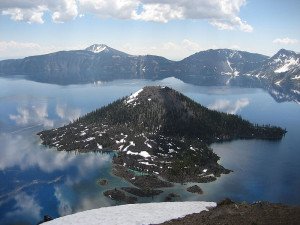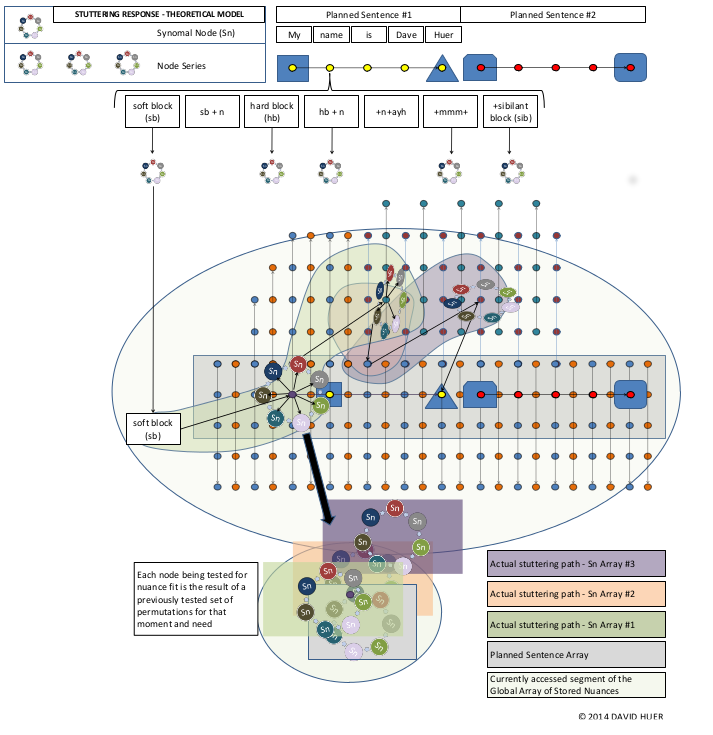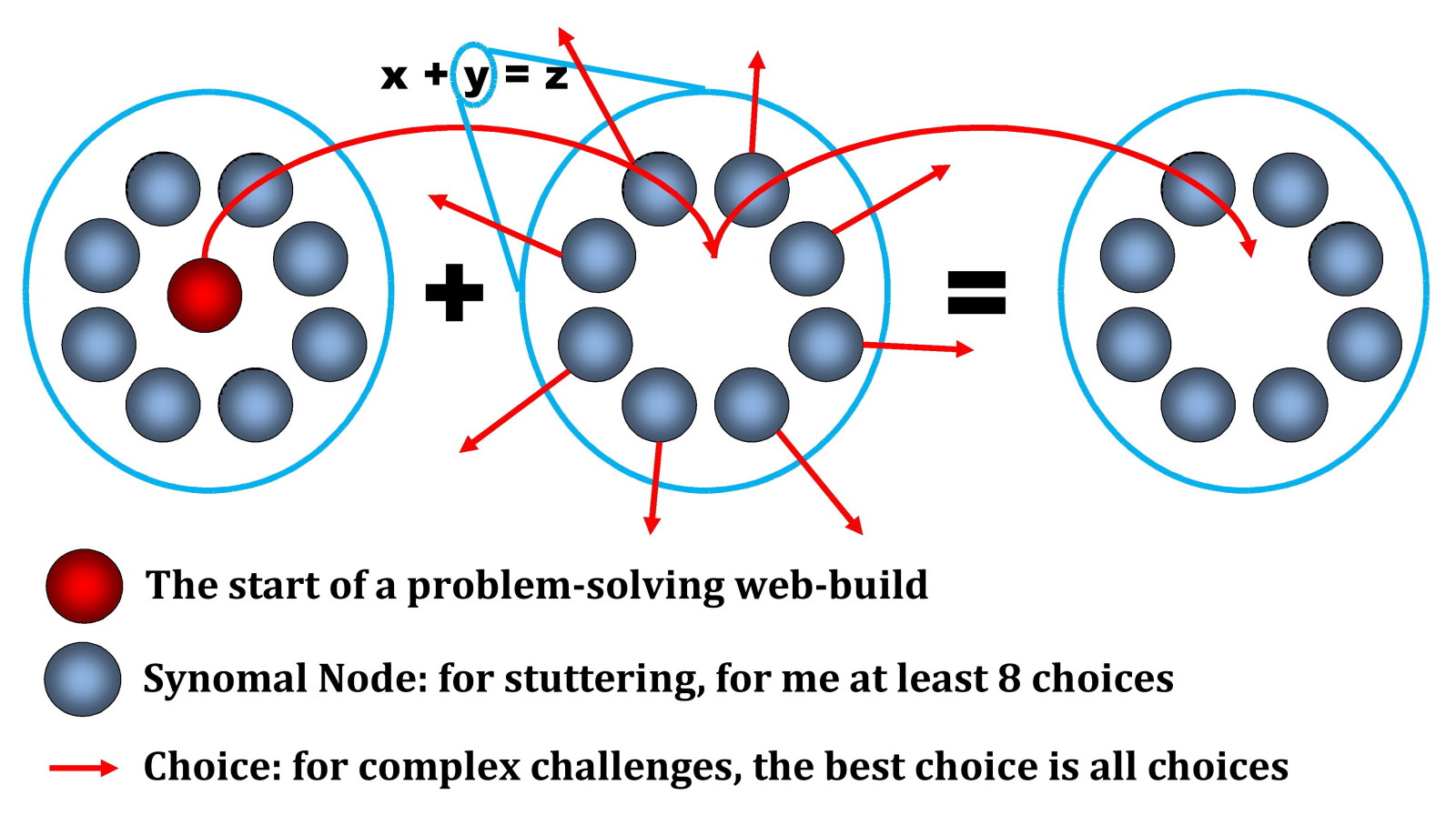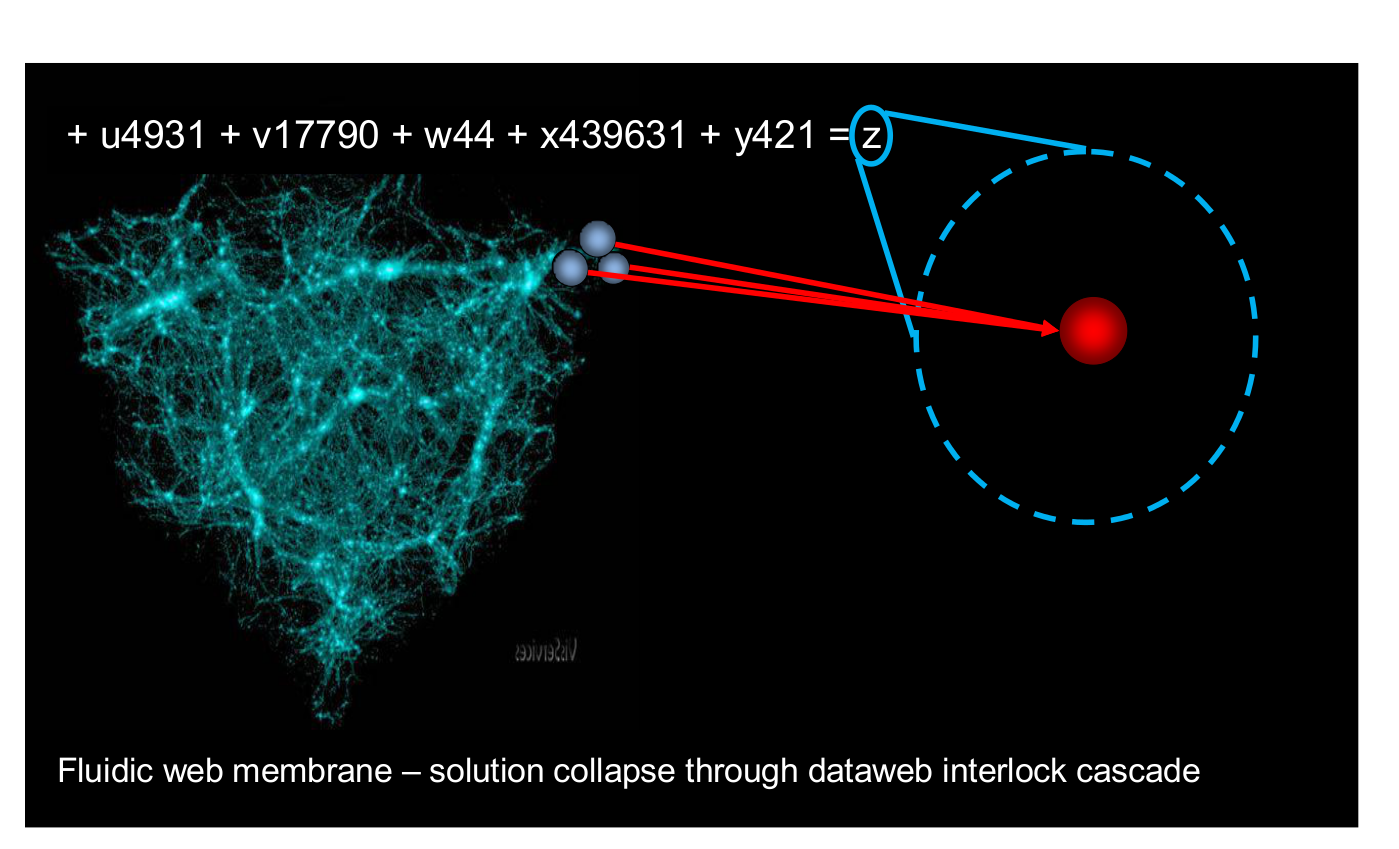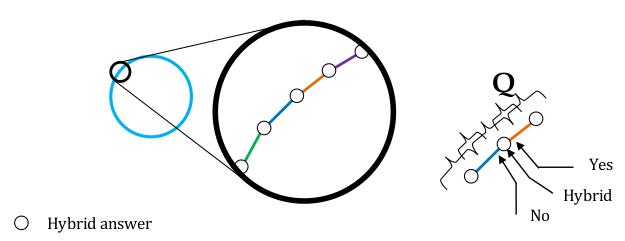When looking for answers, should we instead pan for questions?
(Becoming the Cloud, or . . . How I solve problems)
Guy Kawasaki describes a possibly apocryphal internal GE story (see “Harnessing Naïvieté“) about new engineering hires being required–for decades–to experience failure by attempting an “impossible-to-solve” light bulb coating problem — until a new hire solved it. What I do is to to regularly solve these sorts of “impossible” technical, business, and market challenges.
Some backstory
When I was a boy, I’d spend hours and hours trying to understand what numbers were, because they were holes on a page and when I think about paper, it has thickness of about 2 cm thick. So, I’d inspect all sides of the hole, from underside too, trying to understand what the shape meant. And I learned. Now, I use these skills to solve complex problems as “thought experiment” challenges.
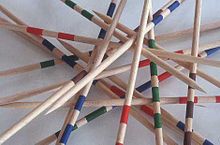 For example, when using pick-up-sticks to teach innovation thinking, cognitively walking underneath and among them as if they are scattered tree trunks; as if I am walking through Mexico’s Cueva de los Cristales / Cave of the Crystals.
For example, when using pick-up-sticks to teach innovation thinking, cognitively walking underneath and among them as if they are scattered tree trunks; as if I am walking through Mexico’s Cueva de los Cristales / Cave of the Crystals.
Carsten Peter’s brilliant photography of explorers in the cave, produced for National Geographic Society, can be found here.*
CLOUDSPACE THINKING
I have learned through reflection since that my practice is to think as a visual “cloudspace” of data points (using “cloud” language back then), by looking at all sides of an object at the same time. When solving a deep problem, I immerse myself deep into the clouds of data, and become/engulf the problem/challenge/ question; quickly compare/sort/combine through many options; and if involving immediate risk and deep challenge, often come by “data cascade” to a potential first solution within 2-5 minutes (although then might have to spend the next few months or years explaining it).
You can image this as walking into a fog of data.
“Path-Dominant Learners” look for a single path because they do not discern the particles that make up the fog, assume there is only one path, and insist that only one path must exist because they know it is there.
- “Spatial-Dominant Learners” see data fog as a mass of particles and cannot find (or see) the same path every time because the particles are constantly shifting position; so know there is no single path and instead a multitude of paths.
It appears that I become the fog, particularly notice all the points, notice the patterns, and then notice the tiny clues that point to interesting stuff. This to me is similar to what Inuit sculptors reputedly think about their work: the subject (animal, being, object) is already inside the stone and they simply free it from the stone. In becoming the fog, I become the question.
When you become what the questions are. . . spatially mapping and projecting anticipated angular permutations, full stack nested rotation sets, and harmonic oscillations in sequence – as an integrated fluidic system of liquid membrane data fields (these could be called “fluid web linkages”) – becomes second nature.
BACKGROUND NOTES
1. Origins
I was thinking about spatial geometry/maths and patterns by age 3, and corrected my father on a tax math problem at age 5, but having learned that this was unwise, learned to hide my skills, escaping into thought experiments, developing a terrible shyness and severe stutter at the same time.
Public and high school was no better. I could do complex spatial math solutions but couldn’t relate it to anything being taught in class, and couldn’t talk to explain, and this continued for decades. I failed traditional testing all the time. But ask me to solve a complex problem? Easy.
Before industrial design school, I went back to adult high school to refresh my skills. In physics class, my test marks were not good, but the teacher (PhD physics) locked my paper on nuclear equations in the school safe. In machine shop class, I created an “impossible to make” 7-sided part using what I call “anticipated angular liquid permutations ” (you could call it “cognitive CNC”), but did not do well in CAD class.
2. Finding Reference Points
For many years, the challenge with math and other numerically-defined rituals is that I could not see paths in an equation because I got lost in the parts of the equation, got lost in the rich spatial beauty of the shape of the numbers and the letters representing numbers (hence not be able to understand the meaning of the number shapes) and also misplace how math symbols (ex. “=”, “+”) function.
 x + y = z
x + y = z
as:
“x-hole” +”plus sign symbol” + “y-hole” + “equal sign symbol” + “z-hole”
with each x, y, z (etc) or number as a hole on the page.
When letters represented numbers, the challenge became bigger:

Numbers to me are “visual fjords”. Here, the “4” and “8” are not caldera with “central uplift cones”. There are no islands.
Looking at these from a bird’s eye view, it is easy for me to see – now – that the shapes represent numbers. But it took years of assessment to determine that these 3D shapes represent specific meanings to the society around me. In fact, for me, it is the shapes that I have assigned meaning to after years of study, NOT anything intrinsic in the shape.
It took innumerable hours to practice for math tests (often, “failing” tests designed by linear-framing thinkers for linear-framing thinkers). I didn’t see equations as a system and the numbers and symbols as parts of a system. The challenge with not comprehending symbols as a reference point meant I would “lose” the joining reference point between two halves of an equation. I tried to resolve this by imagining an equal sign (“=”) as a bridge between each half of each equation, but then get “lost” again because I would forget the adjoining reference points between each “abutment” and its associated path of numbers and mathematical symbols.
I have concluded since that because I could not find reference points, I learned and/or taught myself to use the uncomprehended regions where the reference points were supposedly located as:
(a) sub-bridges between the known parts of an equation, and
(b) new “end” points for a multitude of entirely new exploratory paths
(these are Sn nodes, described below)
3. Using referent thinking to manage stuttering
I have had a severe stutter for many years.
Until 2006 when I got the SpeechEasy anti-stuttering device, the “reference point hunt” challenge helped me get through a stuttering block because I was consciously aware of hundreds of synonym choices arrayed and available in “real time”, whilst preparing up to 8 different synonyms for every sound nuance I was getting stuck on.
This is my nuance testing model:
For example, a sentence with 5 words intended to be spoken as:
My Name is Dave Huer.
(A + B + C + D + E )
Might actually get spoken as a series of what I call “synomal clouds” of “synomal nodes” (Sn):
(A1 + B1 + C1 + C2+ C3 + C4 + D1 + D2 + E1)
New Page with link to original PDF page.
This is rendered as a flat description.
To comprehend, you need to imagine yourself standing in the midst of a cloud of data with datapoints arrayed around you, and you are the moving core of the cloud of data.
Synomal nodes happen every time there is a speech block. Every speech block attracts a cloud of nuance sets, the best nuance fits are prepped for testing and each best nuance option is tested for fit.
A nuance set ought to be thought of as a spatial examination of possible combinations (binary and hybrid meanings). The nuance that fits best becomes the starting point of the new “sentence model” direction, and the entire string is almost parallel to mimic the intent and meaning of the original sentence plan. This happens in milliseconds and is unnoticeable by a non-stuttering observer. You must understand, though: each sentence model is constructed from a global datacloud of words, nuances, and sounds.
You can think of this as a cloud of data points, strung together in a multidimensional array. Data construction to me is multinary, not binary.
There is no Yes/No, 0/1, Up/Down, Left/Right.
There is instead a balancing act of dataflow. That’s where I go.
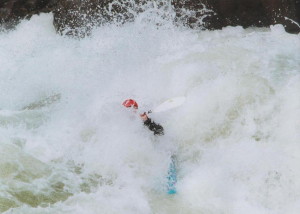 Similarly, in whitewater kayaking, there are interesting flow structures at the top of a rapid that are synonymous to the event horizon of a black hole. The event horizon of a black hole defines the edge of no return; once past, you’re gone into the maelstrom.
Similarly, in whitewater kayaking, there are interesting flow structures at the top of a rapid that are synonymous to the event horizon of a black hole. The event horizon of a black hole defines the edge of no return; once past, you’re gone into the maelstrom.
Similarly, at the head of a rapid, there are times when you can sit at the top of a raging torrent, and not get sucked in, but sit there, languidly, until you choose to enter. It is challenging to go back upstream, though—so there is a balancing place at the event horizon; a balancing place between choices. And there are always multiple choices—at the head of a rapid there are at least 7 choices (stay balancing on the event horizon, go downstream, go upstream, go to river left shore, go to river right shore, hop on a rock if there is one…and roll the boat). Finding the balancing path between multiple choices is where the interesting permuting solutions can, for a time, reside.
More particularly, when faced with an “impossible” set of choices, could it be that the best choice is all choices — all imaginable and anticipatable choices?
When solution-set-finding happens, I experience what can be called a “data cascade”. All the data cascades into a series of proposed solutions and often, a system solution; and cascading is sparked by a trigger—a clue that is a key that finally unlocks the puzzle. Cascades are quick events that are noticed as they happen. Similarly, each system model is constructed from a gathered global cloud of data.
4. Visual/Tonal Mapping and Data Processing
When learning and observing, I am over time able to map the characteristics of the tonal shape of the spaces I move through, and use these visual/sound maps to construct shape and location paths.
This skill set involves the ability to map, dimensionally locate and store the locations of all the data linkages as a constantly-moving set of data points, and reconstruct the form/shapes around me by approximating the hidden shape from remembered parallel data points. For example, when I walk past a truck and think about the drive train, I deconstruct the approximate pattern of drive trains and “see” the truck as a transparent shape. When I look at a lamp post, I can imagine see the visual side and deconstruct it into a shaped column.
Take my stuttering explanation, remove the “speech block/Sn response” event pairings, and there is the same method of moving through cloud pattern sets, noticing, cataloging, sorting the cloudpoints, then coming to a place where a data cascade is triggered. When designing my own projects, it is of course easier to map the project, object, or challenge because I am examining at all sides of it all the time, inside and outside.
5. Cloudboxing
I am able to construct and study complex data sets, but some challenges were beyond me because I could not focus on specific data long enough to study it. High complexity/high remembering requirements—fine. Low complexity/ linear remembering requirements—completely lost. Cloudboxing is a way to solve this ancient locationing challenge.
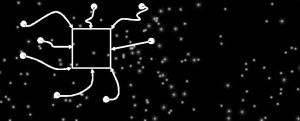 Simply put, whilst learning HTML/CSS and JQuery at BC Institute of Technology, I constantly interviewed other classmates and faculty to get a sense of what coding actually is, then taught myself to construct a box out of datapoints. You can picture this similarly to the note about teaching the disabled student how to kayak roll: by gathering a set of datapoints in thoughtspace.
Simply put, whilst learning HTML/CSS and JQuery at BC Institute of Technology, I constantly interviewed other classmates and faculty to get a sense of what coding actually is, then taught myself to construct a box out of datapoints. You can picture this similarly to the note about teaching the disabled student how to kayak roll: by gathering a set of datapoints in thoughtspace.
I was able to define the shape as a deep dish pizza box—first by using the desktop browser shape to create an imagined rectangular window shape, rotating that shape to a “bottom” position, extruding 4 vertical walls from it, and then adding a bottom to it. Making the code being worked equivalent to a slice of pizza:
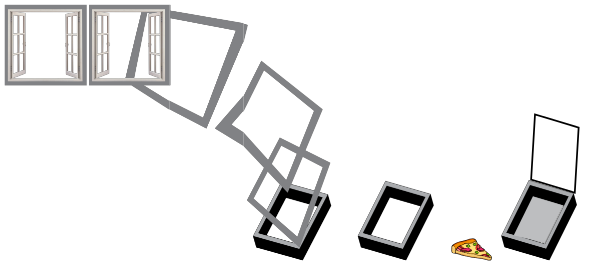 My tutor Yi Zhou understood my explanations of what I was doing, and for the last bit (the lid) helped me understand that javascript/jquery could be thought of as the “lid” on the box.
My tutor Yi Zhou understood my explanations of what I was doing, and for the last bit (the lid) helped me understand that javascript/jquery could be thought of as the “lid” on the box.
This took 4 weeks of intense and painful thinking. As a sense of pain, it is how I imagine left-handed people felt when being forced to learn to be right-handed. Not natural, and painful, but doable.
It doesn’t mean I move easily between 2D and 3D thinking. Instead, I translate 2D activity into spatial activity, then do that spatial activity inside the cloudbox. But now I can code, and understand what coders and math people do, and have started to plug jquery arrays into the datastream.
And this, in turn gives me a way to construct thought boxes to isolate Sn hybrid nodes for explanations of my solutions.
To most . . . dry stuff. But an exciting solution.
And a new way to solve challenging questions.
And how many predictive questions are there?
Well, it does seem that there are as many comparative predictive questions as answers.
Consider the construction of a circle.
How many planes are there to define the “edge”? . . . 1? 10? 2 million? Infinite?
My suggestion is that there are as many comparative questions as there are planes, and as many, too, as answers. It does seem that it is not a matter of searching for a series of Yes/No or even trinary Yes/Hybrid/No answers. Instead, could it be that every “question” is a series of infinitely stacked synomal clouds (my term being “synomal superpositional clouds”)? Could it simply be that our minds search (notice, compare, predict, test) for answers until there are no questions to ask?
Might the only limits to our delving capacity be the capacity to notice and pick from an infinite cornucopia of curiousities, and test, and mathematically take-up this liquid membraning data to model where to drill ever deeper, and then to relate the answers back up the delving web?
Being business people, when looking for flecks of gold to mine, do we instead pan for questions?
I wonder.
* Imagine if he’d been named Karsten!
Images:
“Jeu de mikado” by Heurtelions (CC-BY-SA-3.0,2.5,2.0,1.0)
Cueva de los Cristales, Chihuahua, Mexico – Link with permission of Carsten Peter
“Above the Clouds” by Kulshrax (CC-BY-3.0-us)
“Wizard Island” at Crater Lake, Oregon, USA by dweekly (CC-2.0)
“Dark Energy” public domain by U.Louisville, USA
Drill bit close up by Mike Baird (CC-2.0)
All other images © Dave Huer 2014


